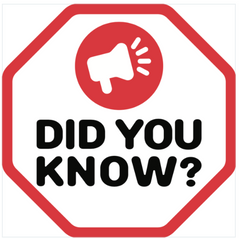Women's Heart Health

Even though women make up more than half of the U.S. population, for the last 50 years, the treatment of women’s hearts has been largely based on medical research done on men.
- Cardiovascular disease is the No. 1 cause of death for U.S. women.
- Two out of three American women have at least one risk factor for heart disease.
- One out of two American women will develop heart and vascular disease.
- Twelve times as many women die of heart disease every year as die from breast cancer.
- 455,000 American women die of heart disease every year, compared to 410,000 men.
- One-quarter to one-half of women with heart disease experience different symptoms than men typically do. For example, many women experience extreme fatigue and nausea, while men report a tingling feeling in their left arm.
Nearly every 80 seconds, a woman dies from heart disease, and heart disease and stroke kill more women than all cancers combined. Survey data shows that an alarming 45 percent of U.S. women ages 25-60 don’t know heart disease is their number one killer.
Dr. Noel Bairy Merz, Director, Barbara Streisand Women’s Heart Center, Cedars-Sinai Heart Institute says, “More women now die of heart disease than men, yet cardiovascular research has long focused on men.”
The Barbra Streisand Women’s Heart Center at the Cedars-Sinai Heart Institute is playing a leading role in identifying female-pattern heart disease, developing new diagnostic tools and advancing specialized care for women.
Although heart disease kills more women than men every year, the treatment of women’s heart disease was based — until recently — on medical research performed on men.
The center is working to correct these gender inequalities and to educate women on how to recognize female-pattern heart disease symptoms. The center provides convenient access to all of Cedars-Sinai’s diagnostic and treatment resources for heart disease, and is designed to help women reduce their chances of heart disease through a preventive approach, including state-of-the-art screening and testing.
“Women and men need different tests to diagnose heart disease…that’s because women have different biomarkers for cardiovascular disease,” says Noel Bairey Merz, M.D.
According to an article in Clinical Cardiology, 64% of women who die suddenly of coronary heart disease show no prior symptoms.
Prevention
At least 80 percent of women ages 40–60 have one or more chief risk factors for heart disease—high blood pressure, high cholesterol, excess weight, physical inactivity, diabetes, and smoking. Shockingly, so do 60 percent of women ages 20–39.
- If you smoke, quit! Did you know that just one year after you quit, you will cut your risk of coronary heart disease by 50 percent?
- Exercise, even just walking more can help prevent cardiovascular disease.
- Follow a heart-healthy diet that is low in cholesterol, saturated fat, and refined sugars.
- Maintain a healthy weight.
- Reduce stress, even simple activities like getting together with friends for a laugh can go a long way.
- Control high blood pressure and diabetes.
- Limit alcohol consumption.
- Make sure to get your heart checked every year.
A heart check typically includes both a blood pressure and a cholesterol check. Both of these tests can be done as part of a regular office visit and are covered by the Affordable Care Act.
Heart attack signs in women
- Uncomfortable pressure, squeezing, fullness or pain in the center of your chest. It lasts more than a few minutes, or goes away and comes back.
- Pain or discomfort in one or both arms, the back, neck, jaw or stomach.
- Shortness of breath with or without chest discomfort.
- Other signs such as breaking out in a cold sweat, nausea or lightheadedness.
- As with men, women’s most common heart attack symptom is chest pain or discomfort. But women are somewhat more likely than men to experience some of the other common symptoms, particularly shortness of breath, nausea/vomiting and back or jaw pain.
If you have any of these signs, call 9-1-1 and get to a hospital right away.
Heart disease and sex differences
- Women who have a history of irregular menstrual cycles, estrogen deficiencies and polycystic ovary syndrome may have a higher risk of developing heart disease as they age.
- Women can have normal angiograms even when they have ischemic heart disease, which affects the small arteries around the heart, and may not be revealed by an angiogram, which is better at detecting developing clots in larger arteries, a condition that predominately affects men.
- Women are often told their stress tests are normal or that they have “false positives.” Bairey Merz says doctors should pay attention to symptoms such as chest pain and shortness of breath rather than relying on a stress test score.
- Women who exhibit symptoms of ischemic heart disease can benefit from treatments ranging from proper medication to reduce heart attacks and control symptoms, as well as lifestyle changes, such as losing weight, eating a low-fat diet and exercising regularly.
“When I first became a cardiologist, women were widely viewed as if they were simply smaller versions of men. Women have paid a huge price for the medical community not knowing about important gender differences in heart disease.
We’ve now shown that women’s hearts are physiologically different than men’s, and men and women can develop a different kind of disease. Women more frequently have major arteries clear of plaque—unlike the classic male pattern—but their smaller coronary blood vessels cease to constrict and dilate properly. We call this microvascular coronary dysfunction,” says Bairey Merz.
“We are just at the beginning of understanding the differences between the sexes when it comes to heart disease,” Bairey Merz said. “What we need now are large-scale medical studies that identify tailored diagnostic and therapeutic strategies to optimize outcomes for women and men.”



